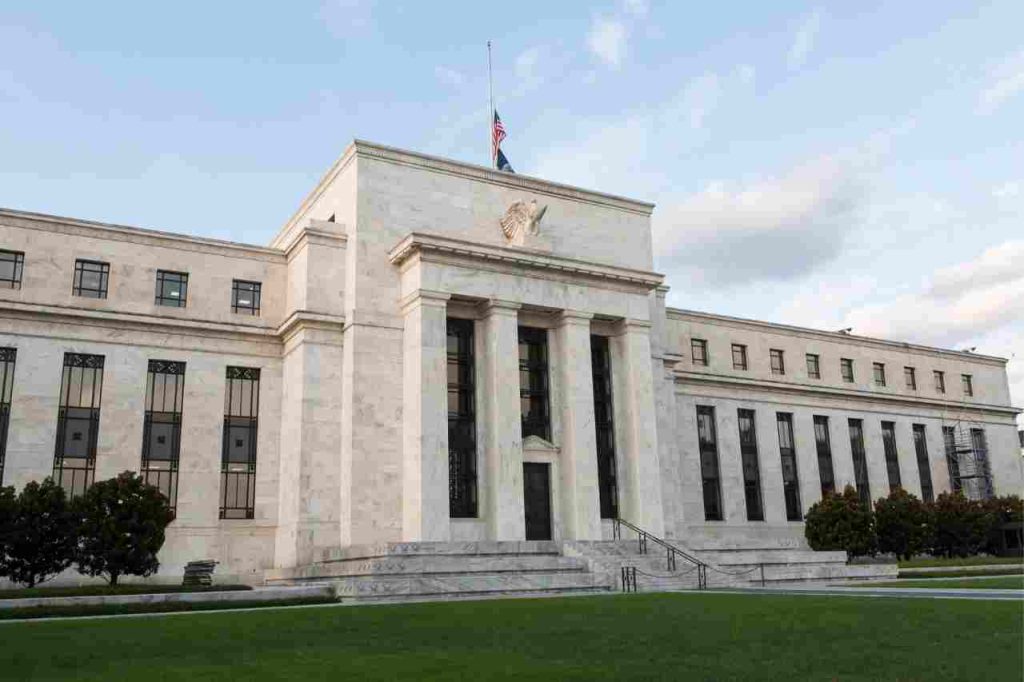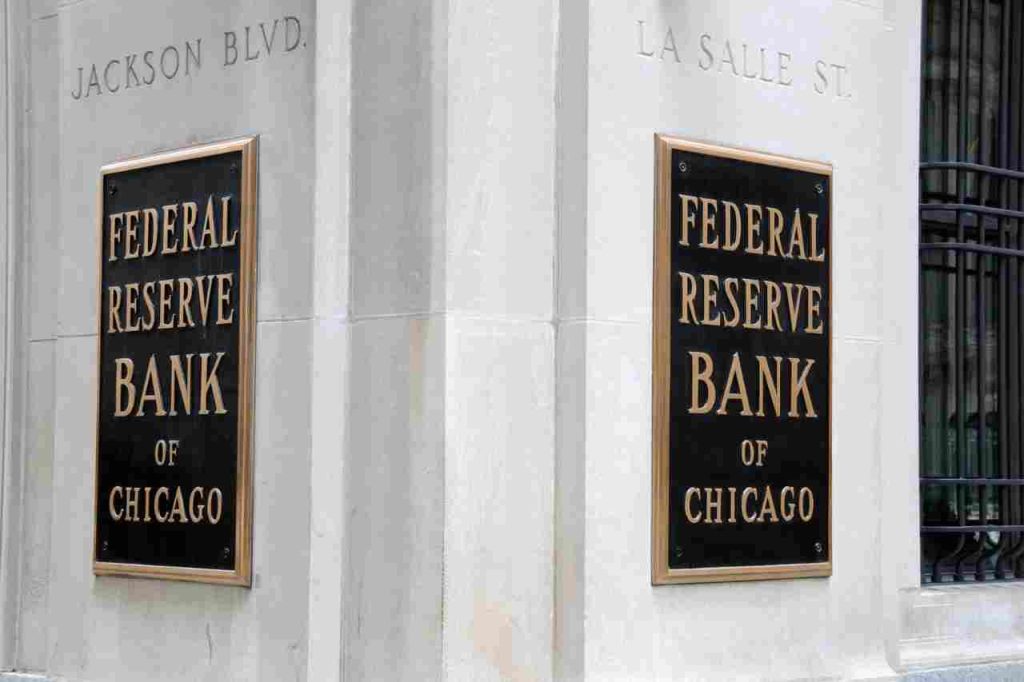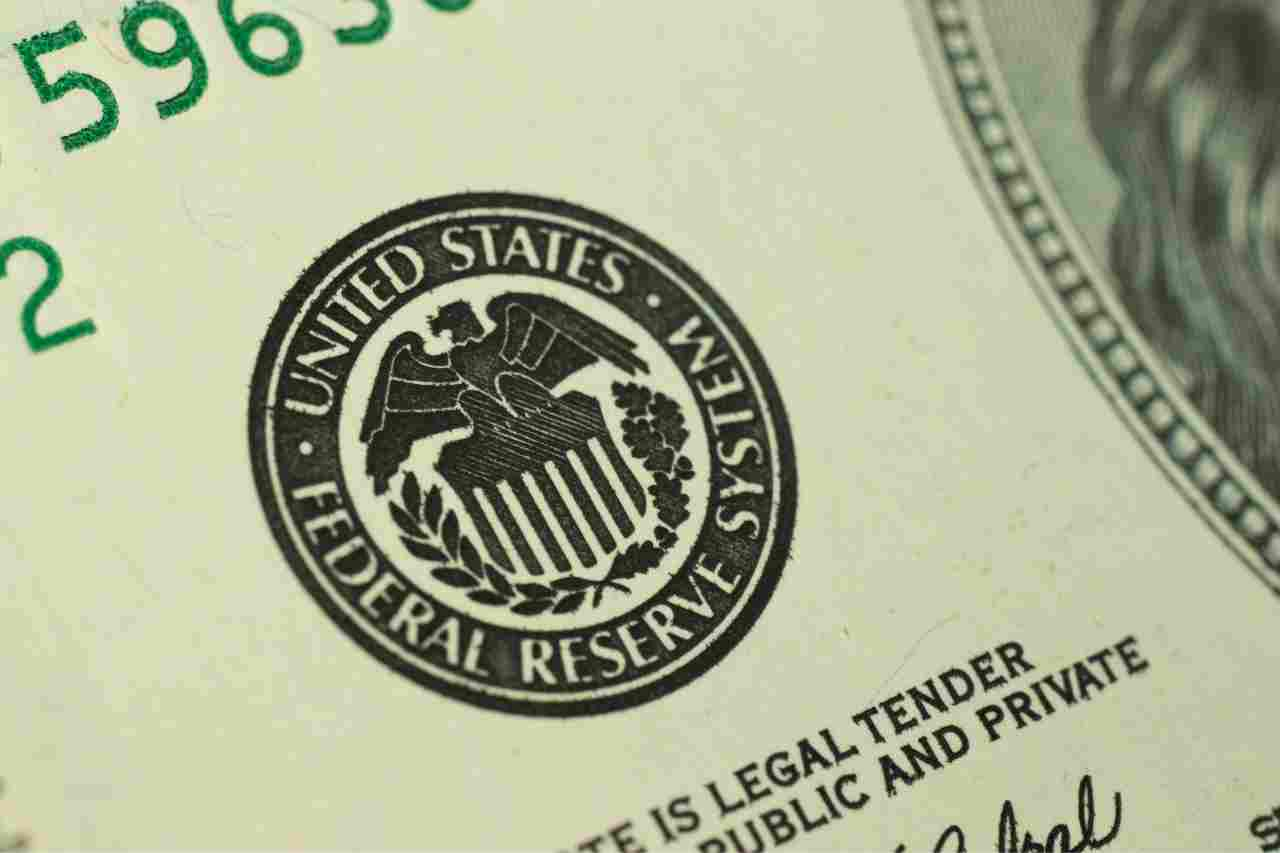Table of Contents
The economy and attitude of a country are reflected in the stock market, which is a dynamic and complicated institution. Investors, companies, and regulators all pay careful attention to it since it serves as a gauge of the health of the economy.
Among the many factors influencing the stock market, one entity holds immense power – the Federal Reserve the United States’ central bank.
In this blog, we will delve into the critical role of the Federal Reserve in shaping the stock market and how its monetary policy decisions have a profound impact on the financial markets.
Understanding the Federal Reserve
Before we dive into the Federal Reserve’s role in shaping the stock market, let’s briefly understand what the Federal Reserve is and its primary functions.
The United States’ central banking system is known as the Federal Reserve or simply the Fed. Its goal since its founding in 1913 has been to give the nation a secure financial and monetary system. The Fed performs the following vital duties:
Monetary Policy
To regulate the country’s money supply and affect interest rates to accomplish specific macroeconomic goals, a central bank, in this case, the Federal Reserve (the Fed) of the United States, implements monetary policy.
The primary objectives of monetary policy are to keep prices steady, increase employment, and encourage economic development. The Fed uses a variety of instruments and strategies to accomplish these goals.
One crucial aspect of monetary policy is controlling the money supply. The money supply includes physical currency, like bills and coins, as well as various forms of bank deposits that individuals and businesses use for transactions.
The Fed can influence the money supply through open market operations, where it buys or sells government securities in the open market.

By doing so, the Fed can inject money into the economy (expanding the money supply) or withdraw money from circulation (contracting the money supply). These actions impact the overall availability of funds in the financial system, affecting lending, borrowing, and spending by consumers and businesses.
The Fed’s primary monetary policy toolset includes interest rates in addition to regulating the money supply. The interest rate at which banks lend money to one another overnight is known as the federal funds rate.
The Fed may affect how much it costs to borrow money and lend it out by changing this rate. By encouraging borrowing and spending, interest rates may boost the economy and create jobs.
Conversely, raising interest rates can cool down an overheated economy by making borrowing more expensive, potentially helping to prevent inflation from spiraling out of control. These interest rate adjustments are crucial in achieving the Fed’s goal of a balanced and stable economic environment.
Bank Supervision and Regulation
A nation’s financial infrastructure must include both bank supervision and regulation to keep the financial system secure and healthy. To ensure that banks function correctly and do not pose undue economic risks, regulatory authorities, such as the central bank, use supervision and control mechanisms.
At its core, bank supervision focuses on monitoring the activities, financial health, and risk management practices of banks. It includes regular examinations and assessments to gauge a bank’s capital adequacy, asset quality, management practices, and liquidity.
These evaluations are crucial in identifying potential vulnerabilities that could jeopardize the bank’s stability or lead to broader systemic risks.
Furthermore, bank regulation entails the establishment and enforcement of rules, policies, and standards that banks must adhere to. These rules cover various aspects, such as capital requirements, liquidity standards, risk management guidelines, and governance structures.

By imposing a regulatory framework, authorities aim to promote prudent banking practices and mitigate the risks associated with financial institutions.
Effective bank supervision and regulation not only protect depositors and investors but also contribute to the overall stability of the financial system, which is essential for economic growth and resilience. In summary, bank supervision and regulation serve as vital safeguards that help prevent financial crises, maintain public trust in the banking sector, and ensure the continued smooth functioning of the broader economy.
Payment Services
The Federal Reserve’s payment services form the foundation of the contemporary financial system and are essential to preserving its stability. Effectively operating the financial markets and the whole economy depends on these services.
Payment clearing and settlement, which entails the safe and prompt movement of payments between financial institutions, is a crucial component of these services. Whether it’s a wire transfer, a cheque, or an electronic transaction, when a payment is initiated, it frequently includes some parties, including banks and intermediaries.
As a central clearinghouse, the Fed ensures that these payments are handled correctly and that money is sent safely. The Fed assists in preventing mistakes, fraud, and interruptions in the payment system by providing this crucial infrastructure, which is
Additionally, the Federal Reserve serves as a source of liquidity support for financial institutions. In times of economic stress or market turmoil, banks may face temporary liquidity shortages, which can threaten their solvency and disrupt the broader financial system. The Fed provides liquidity through mechanisms such as open market operations and discount window lending.

By injecting funds into the banking system, the Fed helps stabilize financial markets and prevents bank runs or panic-driven crises.
This lender-of-last-resort function is a vital component of the Fed’s role in safeguarding the stability of the financial system, ensuring that banks have access to the liquidity they need to meet their obligations and weather turbulent economic conditions.
Financial Stability
Financial stability is a critical pillar of a well-functioning economy, and it refers to the condition in which the financial system operates smoothly and resiliently, without significant disruptions or risks that could lead to a financial crisis.
Maintaining financial stability is paramount for ensuring economic growth, protecting the interests of investors and depositors, and upholding the overall health of the financial system. Central banks, regulatory authorities, and government agencies are entrusted with the responsibility of monitoring and addressing threats to the stability of the financial system.
One key aspect of ensuring financial stability is continuously monitoring various factors that can pose risks to the financial system. These factors may include excessive debt levels, asset bubbles, deteriorating bank asset quality, or disruptions in financial markets.
By closely tracking these indicators and assessing their potential impact, regulatory authorities can identify emerging threats before they escalate into systemic risks.
Once identified, these threats can be addressed through various measures, such as implementing prudential regulations, conducting stress tests on financial institutions, and providing guidance to mitigate risks. In essence, the goal is to proactively prevent financial crises and the economic turmoil that often accompanies them.

In addition to proactive risk management, financial stability also involves crisis management. Despite best efforts, economic crises can still occur, and when they do, regulatory authorities must be prepared to respond swiftly and effectively.
This may involve providing liquidity support to troubled financial institutions, implementing market interventions to restore stability, and coordinating with other government agencies to ensure a coordinated and comprehensive response.
By taking these measures, regulatory authorities aim to contain the crisis, minimize its impact on the broader economy, and prevent a systemic meltdown. In essence, financial stability is about both prevention and effective crisis management, ensuring that the financial system remains resilient and capable of withstanding shocks and challenges.
The Role of Monetary Policy in Shaping the Stock Market
Now that we understand the Fed’s functions let’s focus on its role in shaping the stock market, primarily through monetary policy decisions.
Interest Rates and Stock Prices
Controlling interest rates is one of the Federal Reserve’s most direct methods of influencing the stock market. Banks lend money to one another overnight at an interest rate called the federal funds rate, which is established by the Federal Reserve.

This rate then impacts the economy’s various interest rates, such as those on loans and savings accounts.
Lowering Interest Rates: When the Fed reduces interest rates, individuals and companies may borrow money for less. Lower borrowing costs may encourage more consumer and company spending, improving corporate earnings and stock values.
Raising Interest Rates: Conversely, when the Fed raises interest rates, borrowing becomes more expensive, leading to decreased spending and investment. This may dampen corporate earnings and subsequently impact stock prices negatively.
Investors closely monitor the Fed’s announcements regarding interest rate changes, as these decisions can significantly influence their investment decisions.
Quantitative Easing
In addition to manipulating interest rates, the Federal Reserve also employs unconventional tools like quantitative easing (QE). QE involves the purchase of government securities and other financial assets to increase the money supply and lower long-term interest rates.
The goal is to stimulate economic activity, particularly during times of economic distress.
Impact on Stock Market: The stock market is significantly impacted by quantitative easing. It can raise stock values by decreasing long-term interest rates and motivating investors to seek out bigger returns on the stock market.
When the Fed engages in quantitative easing, it effectively injects money into the financial system, with stocks frequently benefiting from this.

Forward Guidance
The Federal Reserve doesn’t just influence the stock market through its actions but also through its communication. Through its statements and press conferences, the Fed provides forward guidance on its future policy intentions. Clarity or ambiguity in these communications can affect market sentiment.
Clear Guidance: When the Fed provides clear and consistent guidance about its monetary policy intentions, it can help stabilize the stock market by reducing uncertainty. Investors can make more informed decisions, leading to smoother market reactions.
Ambiguity: Conversely, ambiguous or conflicting signals from the Fed can lead to market volatility. Investors may become uncertain about the future direction of interest rates and the economy, resulting in erratic stock price movements.
Economic Data and Indicators
The Federal Reserve continuously monitors economic data and indicators, such as employment figures, inflation rates, and GDP growth. These data points help the Fed assess the economy’s health and make informed policy decisions.
Market Reactions to Data Releases: When economic data is released, it often triggers immediate reactions in the stock market. Positive data, such as solid job growth or rising consumer spending, can boost investor confidence and increase stock prices. Conversely, harmful data may lead to market declines.
Fed Responses to Data: The Federal Reserve may adjust its monetary policy based on economic data. For example, if inflation rises above the Fed’s target, it may consider raising interest rates to cool down the economy. These policy shifts can have significant implications for the stock market.
Challenges and Criticisms
While the Federal Reserve plays a pivotal role in shaping the stock market, its actions and decisions are not without criticism and potential challenges:
Inequality Concerns
One criticism is that the Fed’s policies, particularly QE, can exacerbate income inequality. When the Fed purchases financial assets, it can drive up their prices, benefiting asset owners (often wealthier individuals) while potentially leaving wage earners behind.
Asset Bubbles
Another challenge is the potential for the Fed’s policies to inflate asset bubbles, including in the stock market. Meager interest rates and easy access to credit can encourage speculative behavior, leading to unsustainable price increases in particular assets.

Market Dependence
The stock market has become highly sensitive to Federal Reserve actions and statements. While this sensitivity can help maintain stability during economic crises, it also means that calls may overreact to perceived changes in Fed policy.
Conclusion
The Federal Reserve’s role in shaping the stock market is undeniable. Through its control of interest rates, unconventional tools like quantitative easing, forward guidance, and monitoring of economic data, the Fed wields significant influence over the stock market’s performance.
Investors, businesses, and policymakers closely watch the Fed’s every move and word for insights into future market conditions. The Fed’s actions affect both individual investors and the financial markets, even though they are aimed at broader economic goals.
Anyone attempting to navigate the difficulties of stock investing has to have a firm grasp of the intricate relationship between the Federal Reserve and the stock market. As the economy and financial markets mature, the influence of the Federal Reserve on the stock market will continue to be a hot topic of discussion and analysis.










